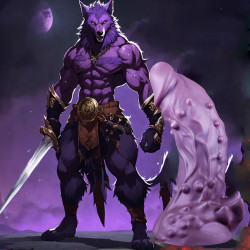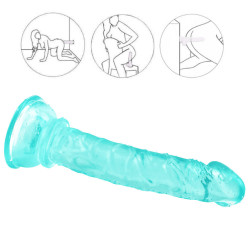
Brat Tamer
A dominant member of the BDSM community who reprimands a brat—a mischievous submissive partner—is known as a brat tamer.
What is a brat?
A brat is a submissive, disobedient individual in the BDSM world.
These individuals challenge their dominant partner's authority and test the limits they have set. Instead of just accepting their partner's power over them, they might want them to demonstrate it. They could also take pleasure in reprimanding their dominant for misbehavior. The power exchange dynamic may be spiced up by brats' tendency to be cheeky and playful.
Brats differ from dutiful submissives in that they are reluctant to follow instructions. But when they are disciplined or sufficiently subdued, they will yield to the dominating.
Types of brats
Brat tamers may be dominant over a wide variety of brat varieties, such as:
- Princess brat: a spoiled brat who frequently goes above and above to achieve what they want.
- Ageplay brat: A brat who pretends to be a younger person, such as a teenage brat or a tiny brat.
- Witty brat: A clever brat who likes to challenge their boss and use their intelligence to gain a promotion.
- Strong personality brat: A defiant brat who struggles to keep things under control.
What is a brat tamer?
A dominant person who has a power-exchange relationship with a bratty sub is known as a brat tamer. Some dominants are drawn to brats because they like their playfulness, feistiness, and unpredictable nature; they may also enjoy controlling their rebellious tendencies or the challenge that comes with dominating them. Other dominants develop brat tamers after falling in love with a bratty sub.
An authoritative role is played in their relationship by brat tamers. They might decide to use a title like Sir, Madam, Daddy, or Mommy that emphasizes this role.
Although they set the rules and discipline mischievous behavior, they also allow their brats to express their opinions and listen to their points of view; they also encourage self-reflection, help them take responsibility for their actions and work toward improving their behavior in the future.
How to tame a brat
To tame their brats, brat tamers usually establish and enforce explicit rules and expectations for behavior. They might discourage their brats from misbehaving by guiding them toward appropriate behavior. Brat tamers frequently reward and praise positive behavior while punishing poor behavior.
To tame their brats, brat tamers employ several strategies, such as asking the brat whether they are certain they want to act or speak in a bratty manner and letting them stop their conduct before penalizing them.
If the brat keeps acting spoiled, the brat tamer could become a more assertive authority figure. After orally correcting their brat, they may use spanking or a time-out as penalties if this is ineffective. Brat Tamers may employ spanking for small transgressions like not getting permission before acting, which is why it's frequently referred to as a punishment or play punishment.
Similar to how a father disciplines a child, brat tamers may discipline their brats, but usually to help them improve. Brats should be aware that their tamer has made a secure, encouraging play area for them and will never punish them needlessly. In order to make their brat feel safe and supported, good brat tamers attend to their needs with aftercare following scenes, particularly those involving punishments.
According to Adutoys, effective brat tamers tailor their taming techniques, according to Miss Mackenzee, a BDSM and sexuality instructor who has a live-in submissive "who can be a bit of a brat at times."
Like any other power exchange connection, every brat-tamer relationship will be unique. Therefore, the way a brat-tamer chooses to tame their brat should be customized to the dynamic in terms of boundaries, needs, wants, etc. One should also consider their desired outcome. There may be harsher or more severe penalties, such as no playtime or more severe repercussions if someone truly wants to change their behavior and stop doing specific things. When a brat crosses a line, I've witnessed brat tamers have their brat write repeated lines. There are numerous approaches to "taming" a brat, but what suits one person might not suit another, which is why kink isn't universal. Examine many strategies for maintaining your brat's discipline. Toss what doesn't work and keep what does!
Qualities of a good brat tamer
It can be challenging to be a good brat tamer because brats tend to be more aggressive and demanding than other submissives. The following characteristics can help a brat tamer get the most out of their brat:
- Patience: Good brat tamers can maintain their composure to prevent undesirable behavior from getting worse, but brats may purposefully try to irritate or offend their brat tamers.
- Understanding: They use their knowledge of their job, the bratty conduct of their brat, and the reasons behind it—such as insecurity or a need for attention—to tailor their taming techniques.
- Firmness: This trait gives brat tamers the advantage against a brat who is feisty.
- Consistency: To help them learn what is and isn't appropriate conduct, brats should be aware of how their brat tamer would react to specific behaviors, as well as what they can and cannot get away with.
- Communication skills: Brat tamers need to be able to articulate the rules and expectations of behavior that their brat must adhere to.
- Willingness to listen: To promote trust and understanding, brat-tamers should let their brats express themselves.
- Creativity: To get the most out of their brats, brat-tamers can use this trait to modify their incentives and punishments.
The power dynamic between a brat and brat tamer
Unlike a typical Dom/sub relationship, the power dynamics between a brat and a brat tamer are more complex. If they deliberately defy the brat tamer or challenge their authority, it can occasionally appear as though the brat is in charge. A competent brat tamer never allows the brat to rise from the bottom, despite the fact that brats may attempt to control or manipulate their tamer.
The brat tamer maintains dominance while the brat remains subservient by establishing clear rules for behavior and disciplining the brat if it violates them.
Although the brat tamer assumes a role of authority, this power dynamic is based on consent and discussion, just like any healthy BDSM relationship. Prior to play, both parties should be aware of and fervently agree to their roles. Either side can negotiate their role or any aspect of the play if they are unhappy with it.
To set limits and talk about what they want from their scenes together, the brat and brat tamer may cooperate. They should also discuss any hard and soft boundaries they may have throughout this conversation.
During these early conversations, the brat and brat tamer can be empowered and assisted in putting an end to any play that goes beyond their comfort zone by establishing a safe word and signal.
Once boundaries have been set, the brat tamer can employ positive reinforcement—like praise and rewards—to reward good conduct and discipline to discourage behavior that goes beyond the bounds. Although it is typically a last choice, brat tamers may discipline their brat for severe infractions. More often, brats receive constructive criticism that explains how they can act better. The purpose of brat tamers' punishments is not to degrade or humiliate their children.
Effective brat taming requires effective communication for giving and getting consent, setting limits, and assisting a brat in staying inside. This continuous process facilitates a good, mutually fulfilling relationship between the brat and its tamer.
"Any power exchange relationship requires communication," Miss Mackenzee continued. All sides must be highly vulnerable and emotionally honest, and they must appreciate one another. It can be advantageous to communicate openly without fear of repercussions. To ensure that the power disparity in the relationship does not affect informed consent, try setting roles aside for a predetermined period.
Benefits of a healthy brat-tamer relationship
Both parties gain from maintaining a positive relationship between a brat and a brat tamer. A positive relationship between the brat and their tamer fosters intimacy and trust. Regular discussions about consent, boundaries, expectations, wishes, and scenarios help both brats and tamers become better communicators and negotiators.
Miss Mackenzee continued, "I think that having clear expectations is one of the biggest advantages of a healthy brat-tamer relationship." Because of all the communication that goes into negotiating any BDSM dynamic, everyone is aware that actions have repercussions. Additionally, it's a really great method to experiment with power dynamics without coming across as meek. Many happy switches that I know have developed the most in these kinds of situations.
In addition to encouraging their brat to grow and reflect, the brat tamer can also grow personally and become more self-aware through a positive brat-tamer connection. To help them become a better partner, a brat can, for instance, bring out their brat tamer's shortcomings. By making these efforts, they can develop as a person and a couple.
"In every dynamic, whether or not kink is present, both partners should be assisting one another in developing their self-awareness and self-knowledge," Miss Mackenzee affirmed. Building tolerance and patience is one method a brat can aid their tamer in developing, particularly throughout the relationship's training phases.











































